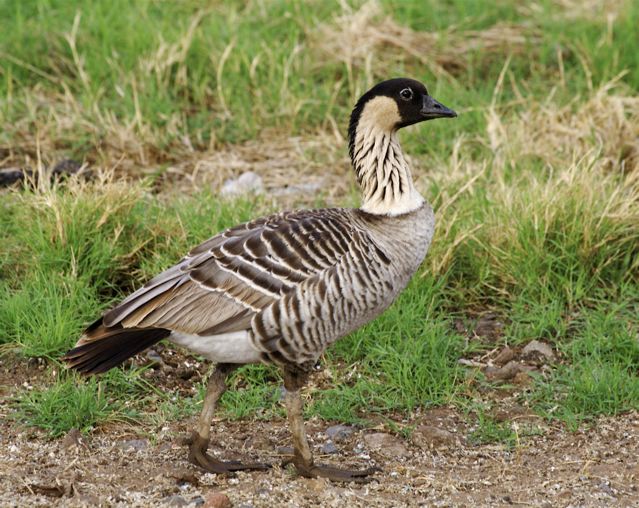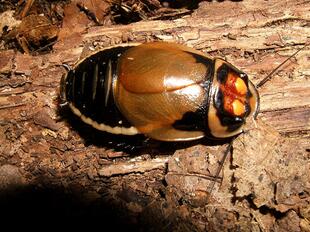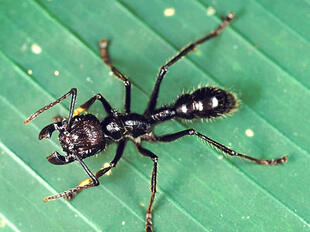
Hawaiian goose, or Nene goose(Branta sandvicensis)
Phylum —chordata
Class — aves
Order — anseriformes
Family — anatidae
Genus – branta
Appearance
The nene is a medium-sized goose at 41 cm (16 in) tall. Females have a mass of 1.525–2.56 kg (3.36–5.64 lb), while males average 1.695–3.05 kg (3.74–6.72 lb), 11% larger than females.
Adult males have a black head and hindneck, buff cheeks and heavily furrowed neck. The neck has black and white diagonal stripes. Aside from being smaller, the female nene is similar to the male in coloration. The adult's bill, legs and feet are black. It has soft feathers under its chin.
Goslings resemble adults, but are a duller brown and with less demarcation between the colors of the head and neck, and striping and barring effects are much reduced.
Habitat
The Hawaiian Goose, or nene, is endemic to the Hawaiian Islands.
Behavior
Having longer and stronger legs, as well as less webbed feet than other geese, nenes walk and run very swiftly on volcanic lava flows. Alternatively, since their wings are 16% smaller than their closest relative, the Canada geese, they are not the best fliers. However, they can fly from island to island, usually taking off from land. They can also swim, usually in ponds and lakes. Similar to other water fowl, they also use their beak to spread oil from their oil gland along their feathers for water proofing.
Nenes are diurnal and sleep on the ground with feet beneath their bodies.
Nenes live in flocks of up to 30 birds, some of which are more loosely constructed than others. Nesting ranges from as close as 45 meters to very far away. Dominance ranks come from the size of the family unit. Large families are dominant to small ones which are dominant to pairs which are dominant to individuals. Males defend the territory immediately surrounding nests and families from other nenes.
Threat displays are numerous. The most common display is the bent-neck threat, which includes facing rivals with head and neck pointed downward, while the neck feathers vibrate. The most intense display is the forward threat, in which neck feathers are erect, the mouth is open and the bird is calling loudly, and the head and neck are up facing the opponent. This is often followed by charging of one bird towards another, in which case the subordinate usually runs off. Physical confrontation rarely occurs, and involve grabbing the neck of an opponent with one's beak, pulling, and beating the opponent with the wing.
Diet
The nene is a herbivore that will either graze or browse, depending on the availability of vegetation. Food items include the leaves, seeds, fruit, and flowers of grasses and shrubs.
Reproduction
The breeding season of the nene, from August to April, is longer than that of any other goose; most eggs are laid between November and January. Unlike most other waterfowl, the nene mates on land.
Nests are built by females on a site of her choosing, in which one to five eggs are laid. Females incubate the eggs for 29 to 32 days, while the male acts as a sentry. Goslings are precocial, able to feed on their own; they remain with their parents until the following breeding season.
The lifespan of wild nene may be 35 years or more. The oldest recorded captive nene is believed to have been 42 years old at the time of its death.
Incaptivity
When keeping this species, it is necessary to have a pool with water or a natural reservoir. The optimal ratio of the reservoir area to pasture is 20% water and 80% pasture. In summer, you can put a bathing tub with a minimum size of 1,5x1,5x0,3 m. The bath water will have to be changed as often as possible. Drinking water must be given separately. The enclosure for a couple must be at least 15 sq. m. The optimal height of grass in the pasture is 7.5 cm.
It is necessary to build a poultry house on the territory of the aviary. Geese will be able to hide in it from the cold and wind in the cold season. You need constantly to update the litter in the poultry house. For such bedding, you will need about 40 kg of dry straw (hay). It is important to replace the wet bedding in time. Otherwise, the plumage quickly becomes dirty and does not protect the bird from the cold.
The poultry house should be made of wood or mud. Humidity and drafts are not allowed in it. In the door for the staff, or directly in the wall of the poultry house, you need to cut one or two gate holes for birds. It is necessary to maintain a constant temperature of 0-2°C in the poultry house. Infrared lamps and electric oil heaters are suitable as heaters. Infrared lamps should be hung at a height of 1.5 m, electric fireplaces should be installed in front of the loopholes to block access to cold air. As a rule, the exits are not closed (except on very cold days and nights), so that the birds can freely walk from the enclosure to the room and back. In the center of the poultry house, you need to install a drinking bowl with electric heating, so that the water in it does not freeze even when the heaters are turned off. The room must be illuminated during the day with two incandescent lamps with a total power of 150 watts.
During the construction of a poultry house, it is very important to take into account that at least one square meter of floor space should be allocated for one adult goose. With a higher density, the room will quickly become polluted, and the air in it will stagnate. This can cause diseases of wild geese and significantly reduce their productivity. Once a year, you need to whitewash the walls with freshly slaked lime.
Aviaries of all types must be equipped with feeders, because green food on the ground is quickly trampled by the geese. This is also convenient from the point of view that birds can easily choose their favorite plants from all the abundance of various grasses with a large width of the feeder.
Geese eat natural grasses. You can add to herbs: wheat grains, waterfowl pellets, and chicken feed. If there is not enough grass on the pasture, it is necessary to bring mown fresh grass. In winter, you can feed sliced vegetables, especially good to give cabbage and salads. Not averse to eating worms, insects and shellfish sometimes.
During nesting, males often become aggressive, so it is better to separate the nesting couple from other birds.
 Russian
Russian
 English
English
























